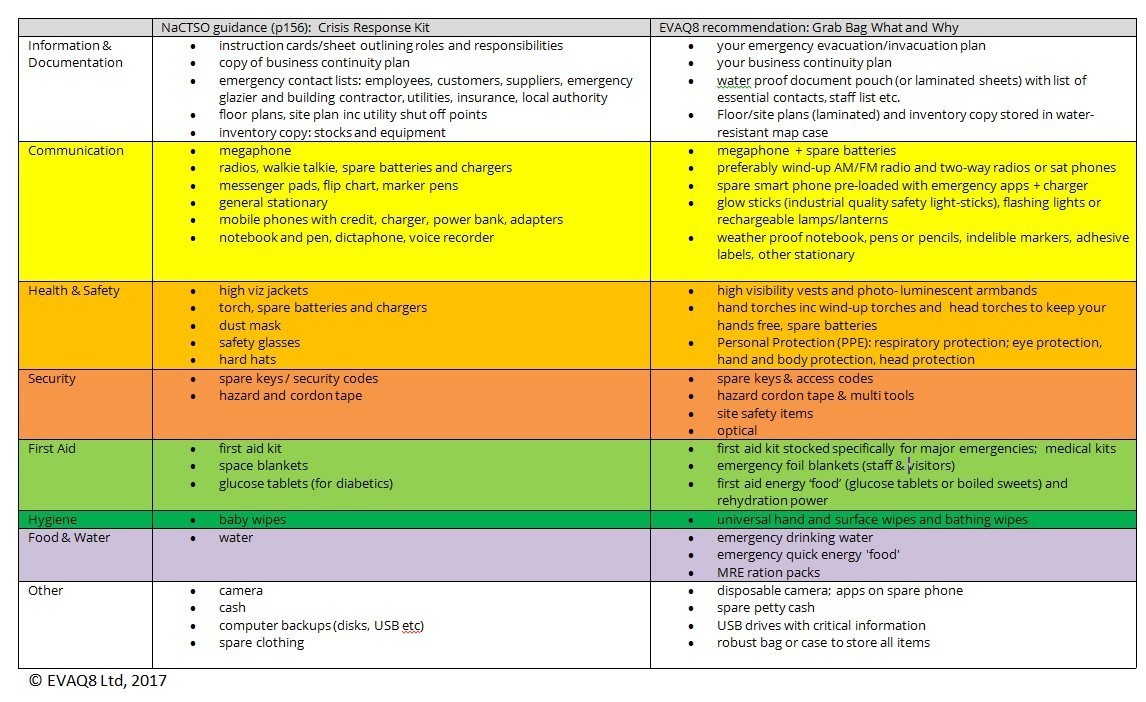So, you have hygiene covered in your emergency grab bag and your shelter-in-place kit. You know about water purification and can tick all those boxes in your personal emergency preparedness plan. That’s great …. but actually not quite good enough aka not quite right, a familiar ‘Goldilocks’ reference for those that are regular visitors to this blog.
Let’s take a closer look. Hygiene and sanitation during emergencies or disasters have been in the news (again!) lately. Abigail Brown asks the right question:
@PortlandPHLUSH failing #sewage infrastructure after #Harvey & #Irma. Do people have emergency sanitation info? https://t.co/OyQWULbMuv
— Abigail Brown (@waterfortheages) September 11, 2017
.. and here is why this is important: flood waters carry and then deposit dangerous bacteria and toxic chemicals
Floodwaters in 2 Houston neighborhoods have been contaminated with toxins that can make people sick, testing shows https://t.co/6oOJKUVPjV
— The New York Times (@nytimes) September 12, 2017
tragically, for some, these problem can seem never ending and, unbelievably, it’s not just a developing world problem
https://twitter.com/ALT_uscis/status/907807813476515842
Contamination raises very serious concerns:
#HurricaneIrma: Cholera concern now due to rains & flooding damage to sanitation and water infrastructure: https://t.co/jboUPS5MjF #Irma
— Phillip Graham (@pipgraham1) September 8, 2017
Now you may think these things don’t happen ‘at home’ here in the UK. Cholera (and typhoid, dysentery, diarrhea…illnesses from molds) is a threat of the past in the UK you may say. In that case I recommend you take a closer look at Cholera and the Thames so brilliantly put together by Westminster Archives with the help of interns and volunteers. Back when and I quote “Bazalgette’s foresight provided a sewage system that has served London well up to now. Today, however, the system is struggling to cope with the demands of 21st century London.” And that’s in good times, not during an emergency or disaster such as security threats, serious storms and flooding.
Listen to Mary Dhonau, she has been there, she knows:
When I was #flooded I couldn't believe what came out of the drains Surely it's only the '3ps' down the loo & only water down the plug hole? https://t.co/2OrGtpUc0t
— Mary Dhonau (@floodmary) September 12, 2017
UK floods: Buckskin sewage contamination continues http://t.co/vm6PnITWcM pic.twitter.com/zTFk6lfjYG
— BBC Hampshire & IoW (@BBC_Hampshire) February 19, 2014
Now, while the best sanitation system does not exist (do explore that link!) it does not mean that household preparedness is powerless. On the contrary. It is crucial that households are better prepared precisely so that there is less of an overall impact when an emergency or disaster occurs.
Household preparedness for emergency sanitation is easy
US Homeland Security News has some of the best advice online while the CDC compares immediate term sanitation solutions. In summary:
- water flush toilets cannot be used when water service is interrupted
- do not flush toilets or dig holes; untreated raw sewage is a serious health hazard
- store a large supply of different size heavy-duty plastic bags (min 1 bag per person per day), disinfectant, toilet paper
- consider portable camp toilets, small trashcans or sturdy buckets with tight fitting lids lined with heavy duty plastic bags are an alternative
- safe disposal; wait for collections and/or instructions of the authorities
All the above applies during emergencies and disasters but also in their aftermath. Recovery can take (a lot of!) time depending on the severity. Cleaning up safely is hugely important and will be covered in another blog. For now I wanted to share this tweet from the NYtimes which has a useful summary so check out their article and further resources links:
Cleanup after a hurricane or a flood is different from regular cleaning. Here's how to do it safely: https://t.co/17CMI48RyC
— The New York Times (@nytimes) September 14, 2017
Why am I writing about all this? Well, because from where I stand I see UK households woefully unprepared and that’s why the topic ‘hygiene’ in this year’s 30days30waysUK campaign #prep2017day20 has been expanded to include emergency sanitation for household preparedness.
September is Preparedness Month is now in full swing. 30days30waysUK is a brilliant FREE campaign on twitter and facebook you can join anytime. Check it out!
Be #prepared – not scared: #WinterReady
The storm names for 2017-18 have been announced, Aileen is first on the list. More here https://t.co/6HjCgJveEa #NameOurStorms #WeatherAware pic.twitter.com/ZagFaOwGGX
— Met Office (@metoffice) September 6, 2017
Have a great week!
Be prepared, not scared.
Monika
If you like this post, please share it to help raise awareness for Emergency and Disaster Preparedness.
Tweet thank you for sharing!
For more EVAQ8 blog simply use the right hand navigation. For emergency kits and practical resources use the top navigation. For FREE resources head over to our Preparedness Hub and find out why we use humour. If you like this post, please share it to help raise awareness for Emergency and Disaster Preparedness. Thank you!
Find EVAQ8 on social media, like and follow us!
Hygiene and sanitation are high priorities in the event of an emergency. @EVAQ8_news explain how to best prepare https://t.co/DcbfCjZrFO
— Flood Re (@floodre) September 28, 2017










